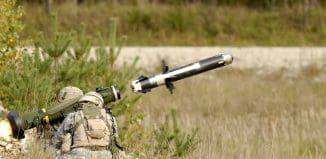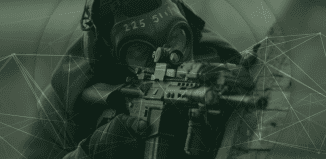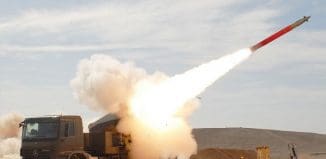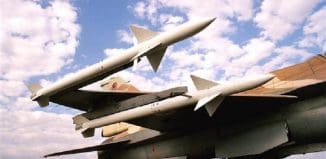Growing interest in the (IMI) Hornet mobile mortar system
This post is also available in:  עברית (Hebrew)
עברית (Hebrew)
There is a growing interest in the “new generation” of mortars developed by Israel military industries (IMI).
Mortars have been part of land combat for hundreds of years. In the 20th century they seemed to lose some of their combat glory but in recent years, it is clear that this was a very short lived episode. Mortars without any doubt have gained renewed respect from fighting forces. The nature of most conflicts in recent years made mortars important again with manufacturers reporting high sales. This led to a new effort to facilitate the use of mortars as an integral force multiplier of infantry units.
Mortars are part of the basic arsenal of infantry units and are used in almost every war zone in the world. The main advantage of the mortars over artillery pieces is its small size and its mobility. Another, no less important fact, is the ability to use it from a trench or from behind a shelter.
In all recent wars and clashes between the Israeli defense forces (IDF) and enemy forces, the mortars were used extensively and made their effect.
Modern mortars normally range in size from 60 millimeters (2.36 inches) to 120 millimeters (4.72 inches) however; versions, both larger and smaller, than these specifications have been produced.
The need for better mobility of mortars and the need to carry large numbers of ammunition rounds, created a problem and a few years ago, the IDF has identified it as one that calls for a quick solution.
While there is an effort to improve the accuracy of mortars and give them higher lethality, the problem of their mobility with the fighting forces, remained the most disturbing and pressing one.
Israel military industries (IMI) entered into an accelerated development process and the result is the “Hornet”. This program is the direct operational need of the IDF and is mainly based on recent combat in Lebanon and the Gaza strip. In all these operations, mortars have been used extensively and with great effect. But the commanders and the soldiers want more, and IMI has initiated the “HORNET” program as one that has a high priority.
The basic idea is to allow small fighting units to take the mortars with large number of ammunition rounds to the front line, without hampering the ability of the soldiers to move fast as the circumstances dictate. IMI has used the fantastic capabilities of an upgraded Polaris all terrain vehicle (ATV). This vehicle with a muffled engine was selected as the platform for the new system after many tests in rough terrain.
The Hornet is equipped with a special optical device attached to a laser rangefinder. When a target is detected by the infantry soldiers, they simply point the laser rangefinder on it and determine its exact location. This data is transferred directly to the smart mortar round.
The smart mortar is equipped with GPS unit and according to IMI the system achieves a 1.5 meters circular error probability (CEP).
The 120 mm GPS-Guided Mortar bomb (120GM), employs a weapon-grade hardened GPS and Internal Navigation System (INS) module, guiding the bomb in flight to hit the target’s coordinates, which are preloaded to the bomb before firing.
 The 120GM is designed for 120 mm Mortar Systems and is effective against Infantry troops, Light Armored Vehicles (LAVs), fortified structures and bunkers. In addition, the 120GM provides the Infantry with a lethal, surgical strike capability to destroy targets beyond line of sight. The point-target accuracy minimizes the amount of bombs needed per mission, in comparison to standard mortar bombs, thus ultimately reducing the logistics tail.
The 120GM is designed for 120 mm Mortar Systems and is effective against Infantry troops, Light Armored Vehicles (LAVs), fortified structures and bunkers. In addition, the 120GM provides the Infantry with a lethal, surgical strike capability to destroy targets beyond line of sight. The point-target accuracy minimizes the amount of bombs needed per mission, in comparison to standard mortar bombs, thus ultimately reducing the logistics tail.
The Hornet unit is configured to carry 22 120 mm mortar rounds. The combination between the high mobility of the ATV and the smart mortar round, gives fighting units the capability to react immediately and accurately to enemy targets. The Hornet can operate with ordinary “dumb” rounds and then the aiming process is based mainly on the laser rangefinder and directional and elevation data.
According to IMI ,the Hornet can be parachute dropped from heavy helicopters like the Sikorsky CH-53. This capability is essential when the fighting units are parachuted in the combat area, or cannot take the mortars with them even on a mobile platform like the Polaris. The IMI source said that while the Hornet is now being offered with regular mortar shells,the guided mortar shell will be offered to potential clients soon, when its development is completed.






























